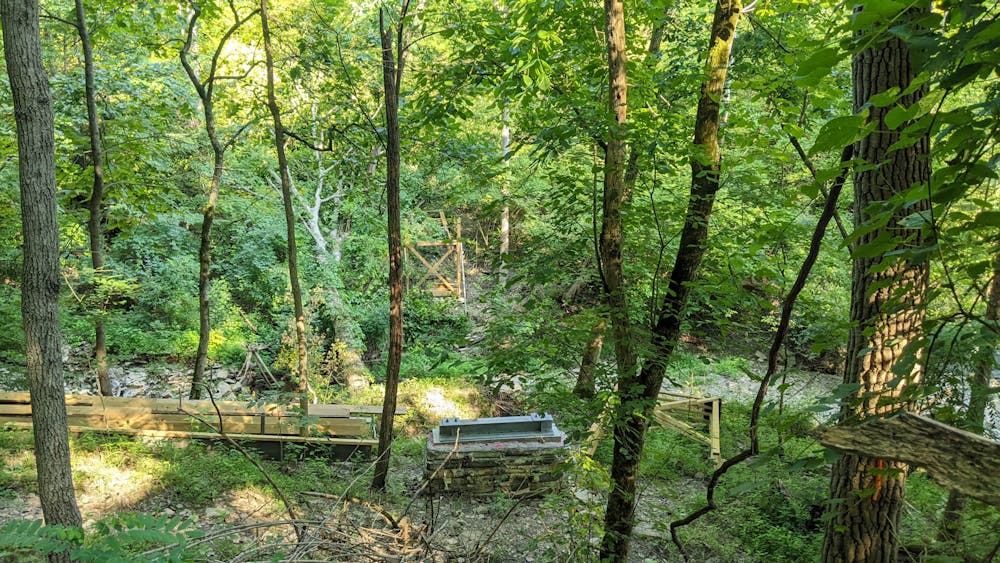A team of Miami University students are designing and constructing a new bridge at the Kirby Nature Preserve near Cincinnati, owned by the nonprofit Western Wildlife Corridor. The bridge will span a tributary of Muddy Creek, allowing the preserve to develop new trails in an area that is usually inaccessible.
Miami’s Engineers Without Borders local project team started planning in 2020 after being connected with the Western Wildlife Corridor by Mike Brunner, a retired engineer and mentor for the team.
“At first, I started going to the Greater Cincinnati professional chapter meetings,” Brunner said. “[There] I met … one of the head mentors for the Miami student chapter, and we [were] talking, and he said there was a need for more mentors for the students.”
In addition to introducing Miami to the Western Wildlife Corridor, Brunner guides students with tasks like calculations and construction.
The bridge has been under construction during various trips the local project team has taken to the site since 2020, with the first few trips consisting mostly of data collection. Using a theodolite, a precision measuring instrument, the team collected measurements for their designs.
Subsequent trips involved the building stage, where students have transported thousands of pounds of materials a quarter of a mile to the bridge.
Eddie Thant, assistant project manager for the team, said the experience has been very valuable to him as a mechanical engineering major.
“I think it's been really fun,” Thant said. “One of the reasons why I decided to join our local team instead of our international team was for these hands-on experiences. Getting some hands-on [experience], even if it's just normal neighbor work, is still good experience, because it kind of gives us a real understanding of engineering.”
The project also provided students with experience doing calculations revolving around statics, a discipline in engineering focused on the internal and external forces of a structure.
The students had to consider the weight of the structure, the wood-walking platform, the weight of people using the bridge and even the weight of potential snowfall. The designs had to comply with Ohio building codes, as well.
Brooklyn Lengyel, a junior biomedical engineering major, started working on the project in 2022 and has since become the project manager.
“It’s a really great, real-world application of stuff that our students learn in their classes,” she said.
Enjoy what you're reading?
Signup for our newsletter
The Community Engineering Corps, a partner of Engineers Without Borders, oversaw the bridge design and provided a review and liability protection for the project.
“When a professional engineer designs something, they typically demand, if they're smart, some kind of protection from [liability] if they got a calculation wrong or stuff,” Brunner said. “It’s like an insurance policy.”
To facilitate the construction, Miami’s chapter partnered with the University of Cincinnati’s chapter to help with installation and the transportation of heavy materials such as prefabricated steel bridge beams.
Future trips will involve the installation of temporary wood beams on the supports to allow the steel structure to be rolled into place. The bridge will be crowned with a wooden walking platform adorned with railing.
“It’s going pretty well,” Thant said. “We've been able to make good progress over the spring semester, and that’s something really, we’re really happy with.”
The group’s next trip is planned for Aug. 11, and the chapter aims to complete the bridge by the end of the fall 2024 semester. Upon completion, the bridge will span a total of 78 feet.




